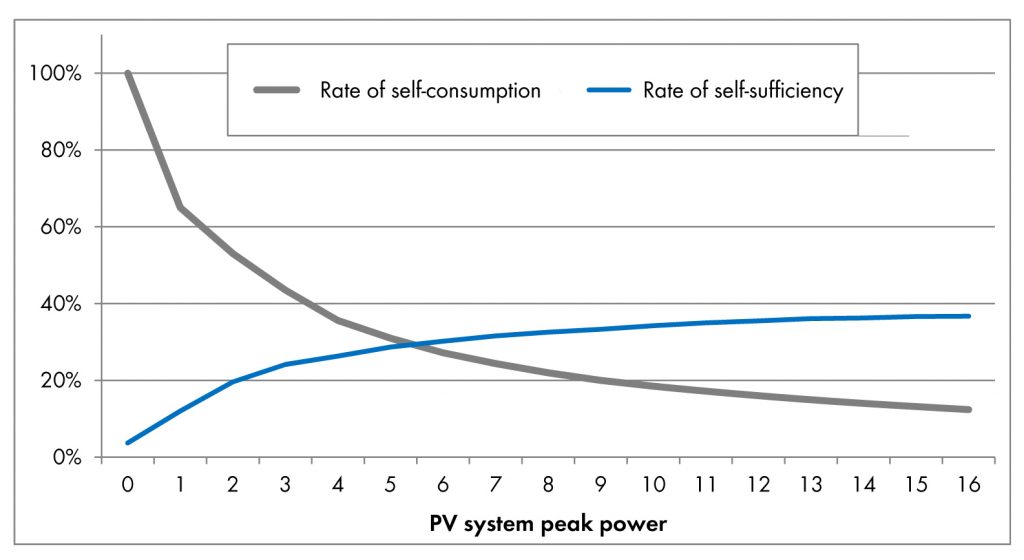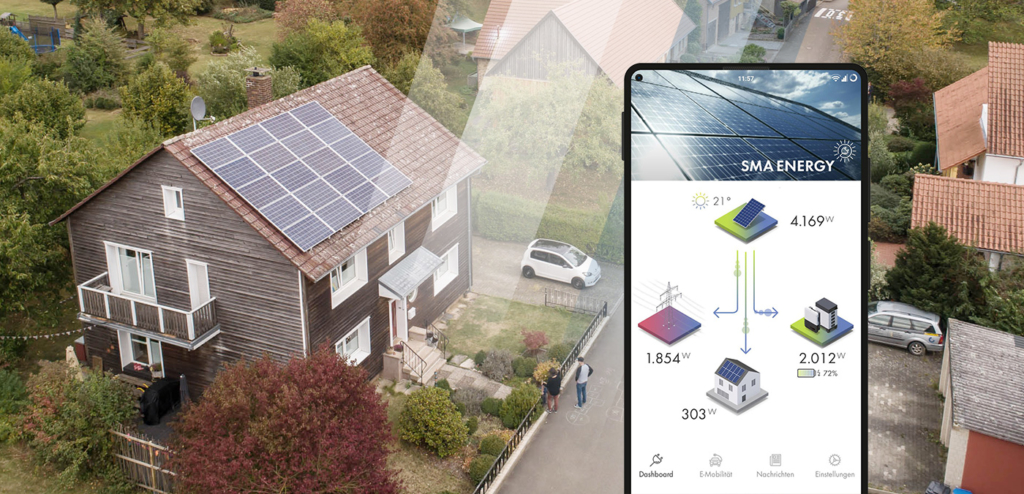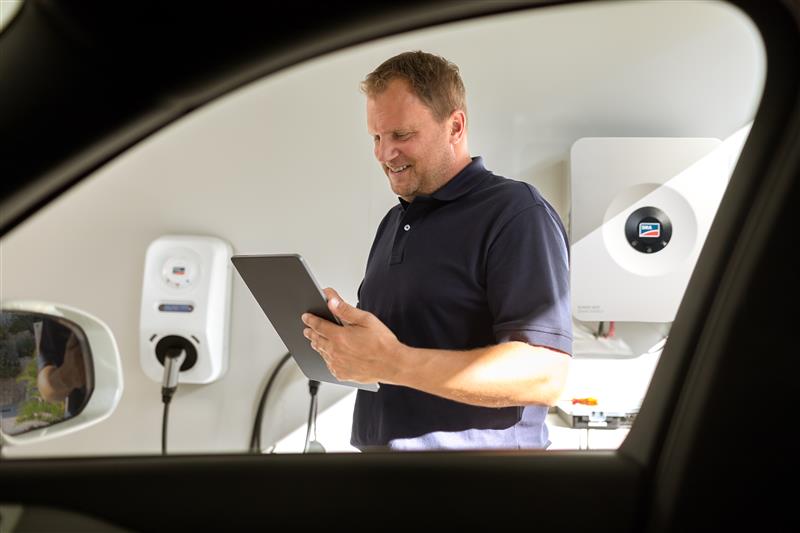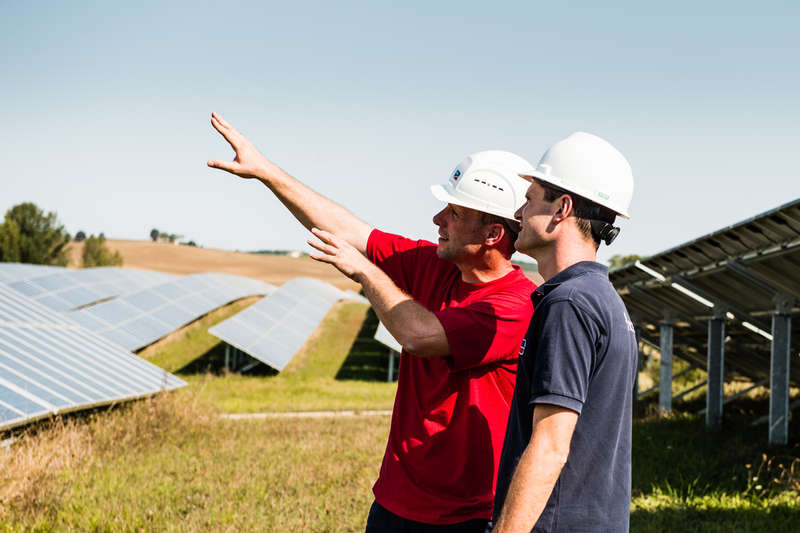Basic Information About Designing Systems for Self-consumption

Now that grid parity has been reached in Germany, self-consumption of solar energy has become the most cost-efficient way to operate a new PV system. The new motto: Use the electricity you generate for your own needs instead of feeding it into the grid.
Going along with this new approach is a growing interest in storage systems: They ensure that a greater share of solar electricity can be used in your own home and also increase your independence. A fundamentally different set of rules applies to the design of PV systems intended for an internal power supply than to systems that only feed into the grid, especially when a storage facility is included. The main reason for this is that several new and interdependent parameters have to be taken into consideration. The goal of this article is to explain the basic relationships and to provide assistance in planning and evaluating such systems.
Basic Principles and Concepts
When the objective is economical self-supply of solar electricity, two points need to be clarified: What cost advantage does self-generated solar electricity have in comparison to electricity purchased from the grid? And what portion of the household’s electricity demand can it cover? Along with the generating costs of solar electricity, the prevailing cost of electricity drawn from the grid and the household’s electricity demand, self-consumption and self-sufficiency rates play key roles here.
The rate of self-consumption refers to the portion of self-produced solar electricity that is consumed in your household.It is based on the total amount of PV kilowatt hours generated and thus determines their average value. The portion that you use yourself has the same value as the price of electricity drawn from the grid, while the rest is valued the same as the current applicable feed-in tariff. The rate of self-consumption — the “mix ratio” — consequently determines the average value of each kilowatt hour of solar electricity generated. Since, for the typical household customer, the feed-in tariff is less than the typical price of electricity obtained from the grid, a high rate of self-consumption of course makes sense and is beneficial.
The rate of self-sufficiency, on the other hand, compares the portion of the needed household electricity that comes from the PV system to the portion that has to be purchased from the electric utility company. In other words, it is based on the household electricity demand and determines the average price of each kilowatt hour consumed. The price of electricity obtained from the grid is specified by the provider, while solar electricity can be produced at significantly lower cost. The higher the rate of self-sufficiency —the “mix ratio”— the lower the average price of each kilowatt hour consumed in the household — or, in short, the more the household saves in electricity costs.
Self-sufficiency Versus Self-consumption
At first glance, the matter seems simple: If it is cheaper to produce solar electricity than to purchase electricity from the grid, then one just needs to install a sufficiently large PV system. Unfortunately, it is more complicated than that. After all, if electricity consumption stays the same, the larger the PV system, the smaller the rate of self-consumption, and therefore the smaller the cost advantage of solar electricity. The increasing amount of surplus power at times of day with high irradiation is to blame for this; surplus power flows into the grid in return for a low feed-in tariff that, at best, only covers costs.
Therefore, when determining the size of a system you have to navigate between two barely profitable extremes. On one end of the spectrum, there are very small systems that theoretically have a very high rate of self-consumption, but that generate only a small amount of energy. The kilowatt hours generated is therefore very high in value, but hardly contribute to the household power supply. At the other end of the spectrum, there are very large PV systems that can cover a larger share of the household electricity demand — but only up to a limit of about 40 percent. Because no matter how many kilowatt hours are generated by the PV system, part of the electrical power is normally needed at a time when the system is not supplying any electricity, or only a relatively small amount. And as soon as the feed-in tariff is only slightly less than the cost of generating the solar electricity, the increasing amounts of surplus energy fed into the grid ensure losses and make the larger systems more and more unprofitable.
Middle-sized systems are therefore ideal. Due to their nature, they still offer a good rate of self-consumption while the rate of self-sufficiency reaches almost a maximum. With this as a basis, the rates of self-consumption and self-sufficiency can be further improved. As a rule of thumb for planning self-consumption systems that are as cost-effective as possible, it therefore makes sense to adjust the system yield to about the level of annual electricity consumption. This is also the configuration that SMA uses in sample calculations.

Fig. 1: Typical progression: While the rate of self-consumption moves towards zero with increasing PV power, the rate of self-sufficiency in simple PV systems does not go beyond 30 to 40 percent (household load profile, annual consumption 5,000 kWh, south-facing orientation).
Greater Self-sufficiency Through Energy Management
Based on the nominal plant power selected, the objective now is to simultaneously increase the rates of self-sufficiency and self-consumption, thereby increasing the effect of electricity cost reductions. Two specific measures make this possible: coordinating the time of consumption with when the system generates electricity and temporarily storing solar electricity. In the ideal situation, both measures are part of a smart energy management taking place more or less automatically. Important to note, an energy management system is also very helpful in temporary storage of solar electricity because it can further optimize the operation of the battery bank as well. Beyond that, however, energy management includes an analysis of all energy flows, foresighted planning based on predicted generation and consumption and a user-friendly override option.
Of course, the benefits associated with increasing self-consumption and self-sufficiency need to be weighed against the costs incurred. A central energy manager is comparatively inexpensive to buy, costs practically nothing to operate, and moreover, can increase battery efficiency. As a first measure, therefore, the option of shifting the time of electricity consumption should always be fully exploited. While this option is not available in every case, storage systems can always be installed and are becoming increasingly reasonable in price. If good judgment is used in implementing both measures, the rates of self-consumption and self-sufficiency can be increased at reasonable expenses, which in turn lowers the household’s electricity costs. Although, particularly in the case of storage systems, which are still quite expensive, another important design issue arises: What is the appropriate storage capacity of the battery?
Large Capacity, Small Effect
As is the case with installed PV power, the required storage capacity also needs to be considered along with the household’s energy demand. The situation related to the size of storage systems is similar to the one concerning increasing self-sufficiency through greater PV power: In both cases, the saying, “the more, the better” does not apply if the overall system is to function in a cost-efficient manner.
The reason for this is that with increasing storage capacity, the specific utilization of the battery, which is usually the most expensive component, gets lower and lower. Thus, a battery that is very large in relation to PV power cannot be fully charged on days with a low level of irradiation and is hardly discharged at all on days with low demand for electricity. Since batteries not only have a limited number of loading and discharge cycles, but also a limited service life in terms of calendar days, the lower number of battery cycles cannot be distributed over a longer period of time, but instead expires, significantly driving up the cost of temporary storage (this is particularly true when more cycle-resistant lithium-ion batteries are used).
SMA’s simulations and field experiences show very impressively that multiplying usable capacity by four only doubles battery performance in increasing self-consumption and self-sufficiency (Fig. 2). When considering profitability, smaller rather than larger storage capacity should therefore be selected as a general rule. On the other hand, complete self-sufficiency based solely on a PV system and batteries is disproportionately expensive and has not been implemented even in off-grid systems in particularly sunny regions. Instead, diesel generators or other decentralized generators are being used to bridge times of low irradiation.
Battery Use for Peak Shaving
Using the battery for peak shaving —in other words, for limiting the feed-in power— is not an argument against small storage sizes either. SMA’s research shows that in typical PV systems with internal household consumption, 2 kWh of usable capacity are sufficient in minimizing losses due to capping of feed-in power at 70 percent of installed PV power (required under Section 6 of the German Renewable Energy Sources Act). Additionally, if battery storage is connected to a smart energy management system that uses generation and consumption predictions, peak shaving does not limit increases in self-consumption in practice. Thus, the battery can be deliberately charged at times of large power surpluses and discharged again as soon as consumption in the house exceeds current PV power.
In the event that feed-in power is capped at 60 percent of installed power, as is envisioned in the recently launched incentive program for PV storage, then (for typical south-facing orientations) somewhat larger storage capacity will naturally be needed for optimal use of the energy supply. However, in the case of an orientation that is not completely optimal or of an east-west generator, a system with only 2 kWh capacity can meet the 60 percent criterion and still use almost all of the PV energy that accrues. The same is true in the case of particularly high power consumption with flexible timing, such as occurs in electric heating of household water by means of a heating cartridge or heat pump.
In individual circumstances, the ideal usable storage capacity depends on many additional parameters, such as cyclical charging that deviates from the generation and load profile, or the battery technology that is used. If lead batteries are used or if there is a desire for a backup electricity supply in case of a power outage, then larger storage batteries definitely make sense too. For typical household applications (2,500 to 7,000 kWh per year, with PV generation at the same scale) and for lithium-ion batteries, however, the most economical size is about 2 kWh, and therefore significantly below the capacity of common storage solutions on the market.
Sensible Self-supply
When combined with smart energy management and a small storage system, ideally designed PV systems can supply more than 50 percent of household’s with inexpensive electricity that is produced in a maximally environmentally friendly way, with costs that can be calculated and that are stable for years on end. In addition they are extremely well prepared for new smart grid business models (participation in virtual power plants, supply of storage services) that will come up during the systems’ service life of at least twenty years.





I need the proper definition of self sufficiency from PV_Battery system.Is it the right equation which i wrote below,
Self sufficiency=1-(total energy taken from grid-Total energy feed into grid)/Total household load consumption energy
I can’t seem to get ANYONE in tech support who knows how to program a Sunny Island 4548 for self- consumption as is described in this post by Felix Kever . Is there anyone there @ SMA who can assist ?
Thank You ,
Thomas
Hi Thomas,
what you are describing is not possible with your Sunny Island type, I’m sorry.
Nevertheless, you can speak to our service experts for Sunny Island. The telephone number is +49 561 9522-399.
Best regards,
Sarah
Will SMA be offering a small energy management system for small commercial bldg use?
The ability to shave peak demand of grid power in my area would open up a whole new market for me.
Hi Patrick,
Thanks for your comment. Where are you from?
Bests Leonie